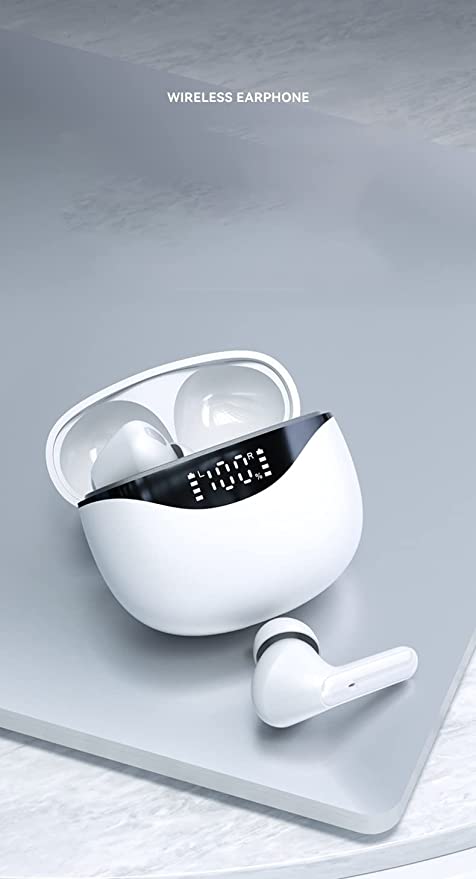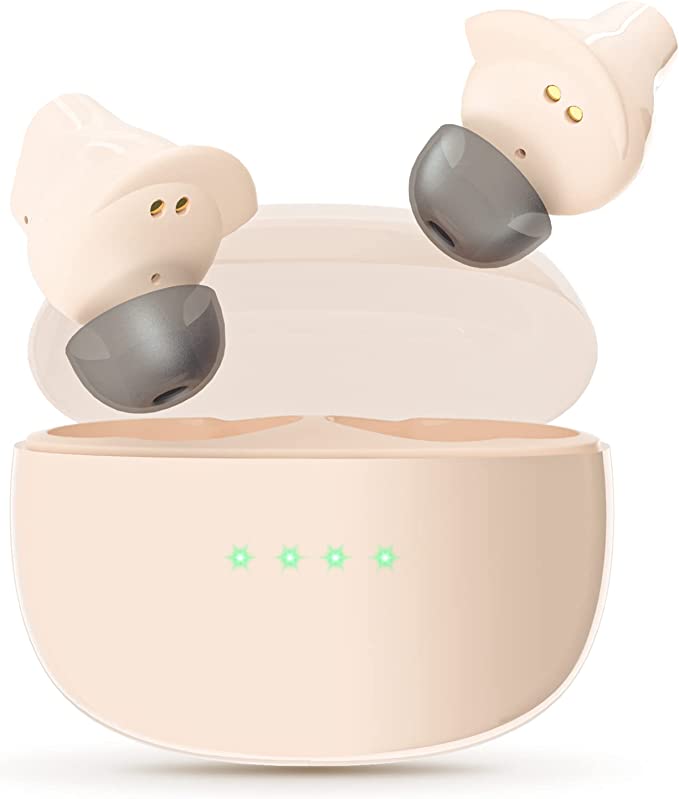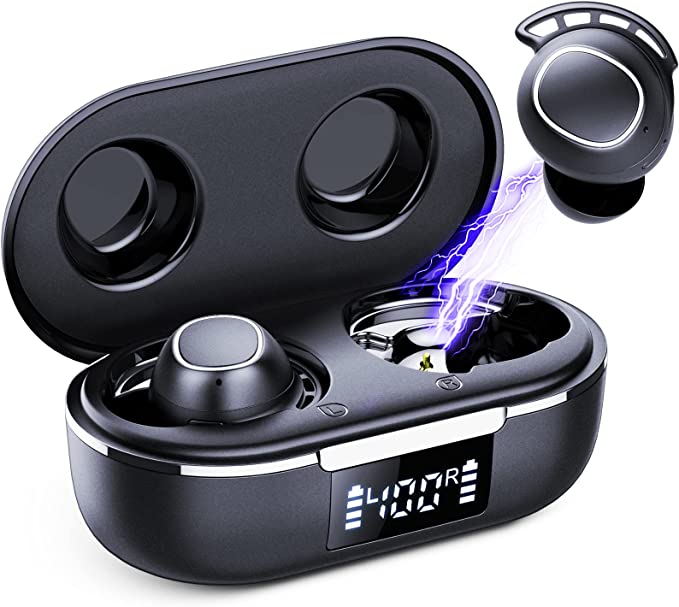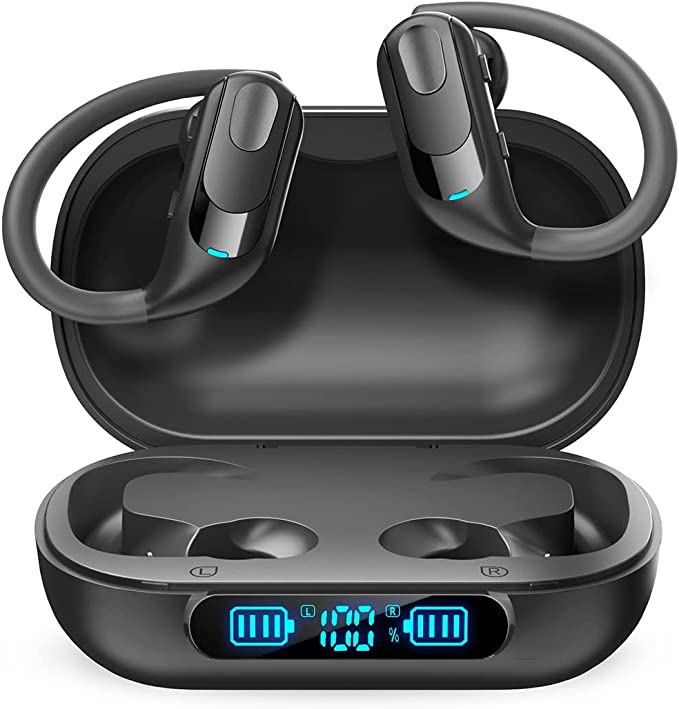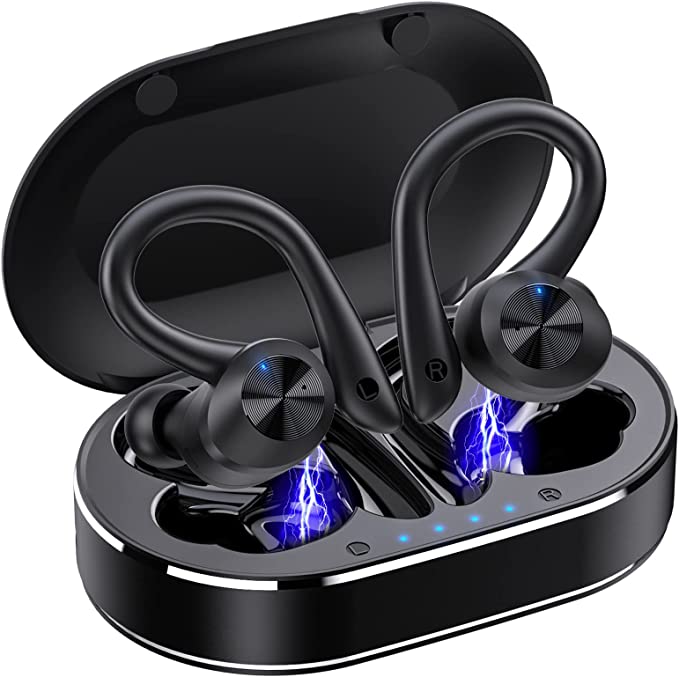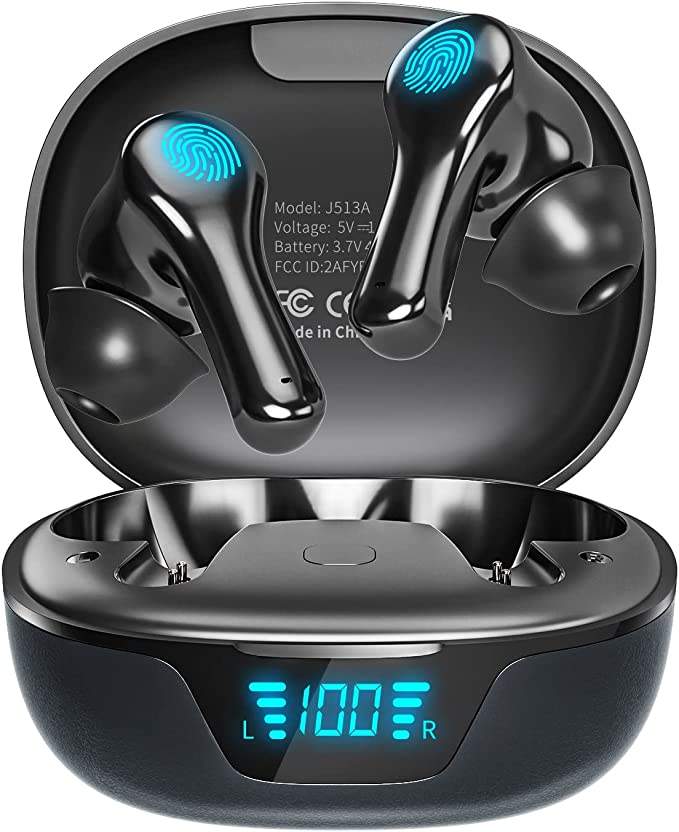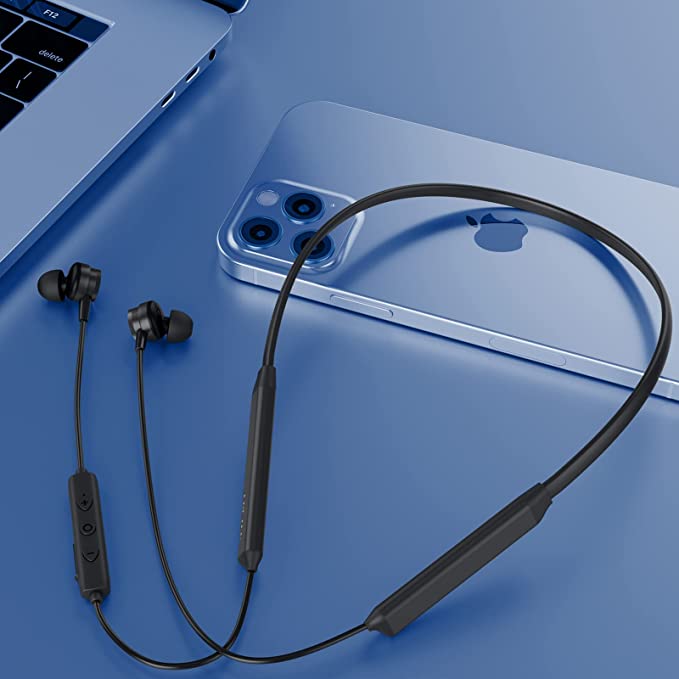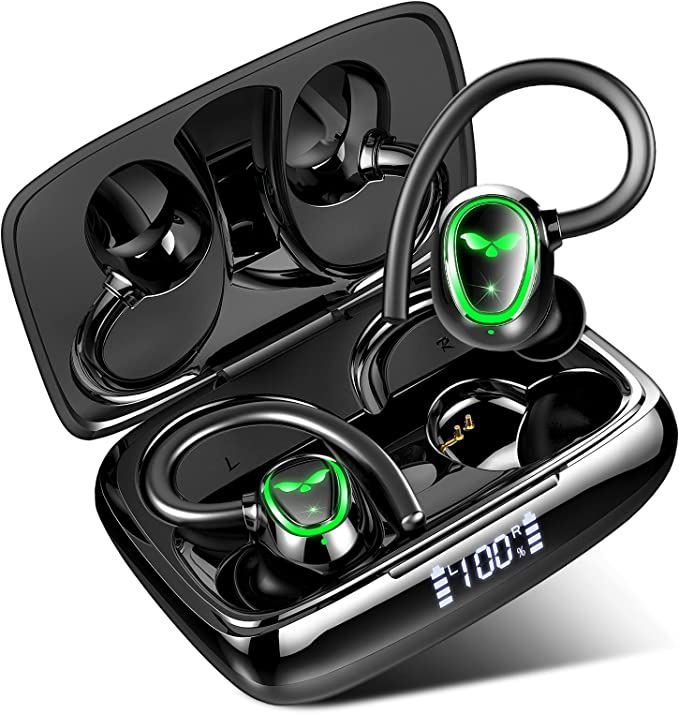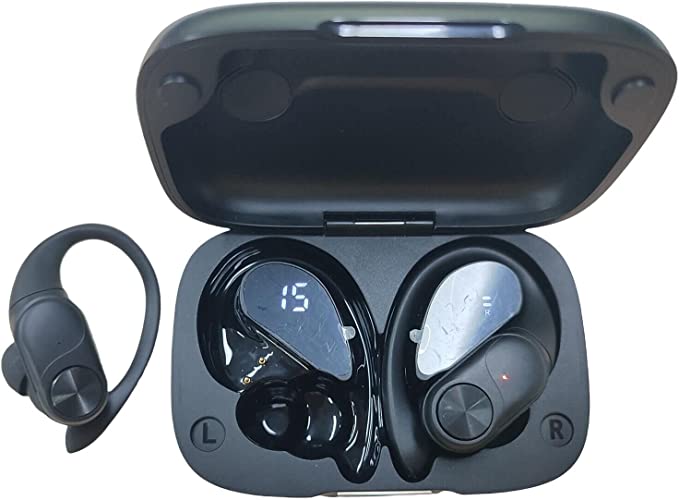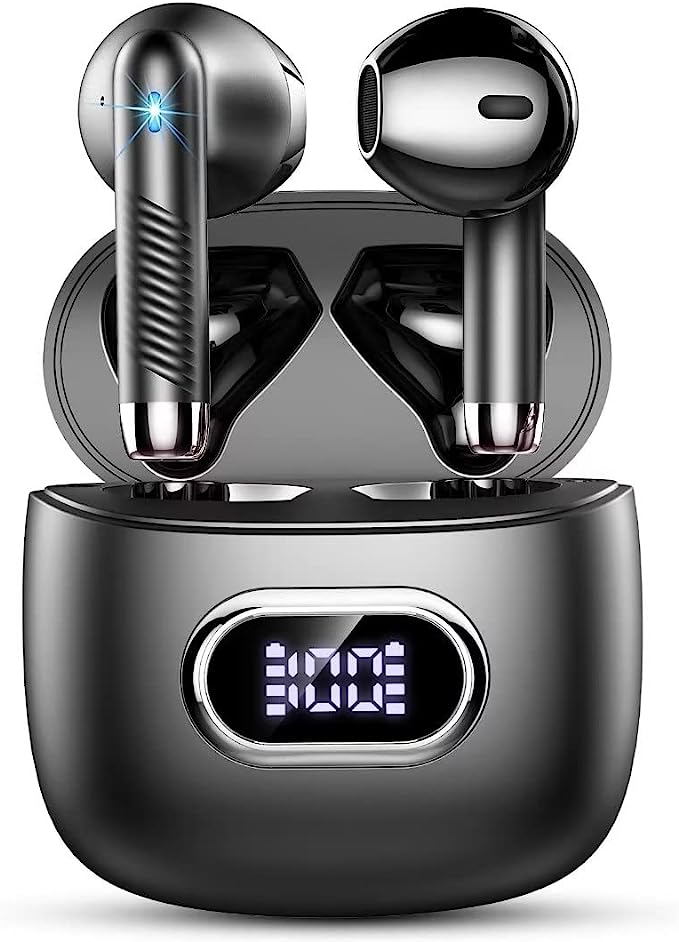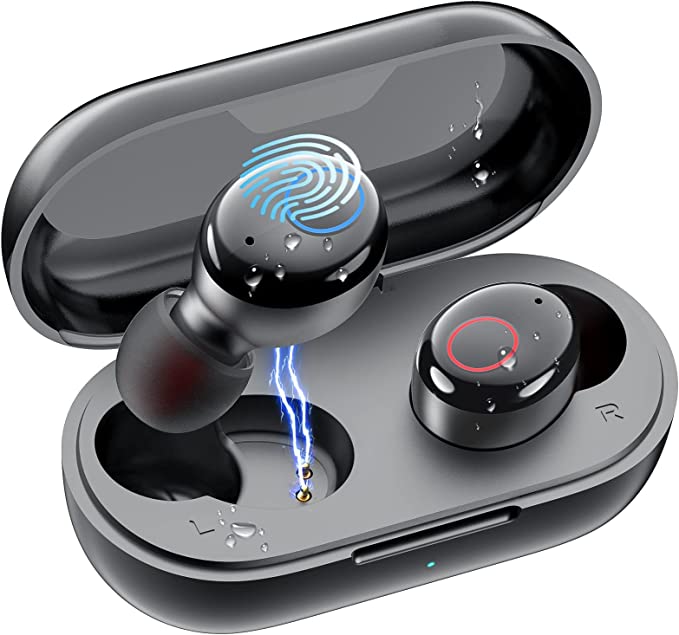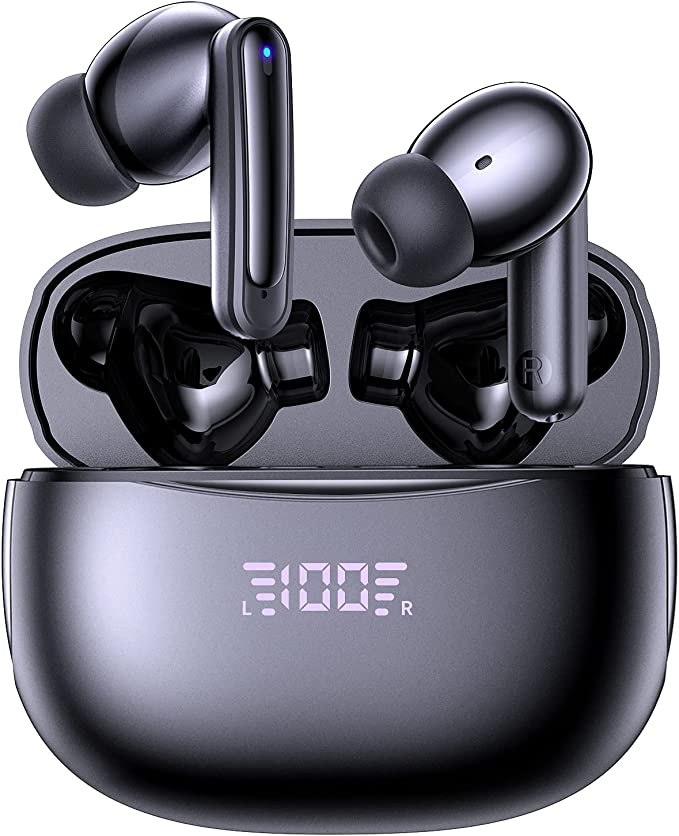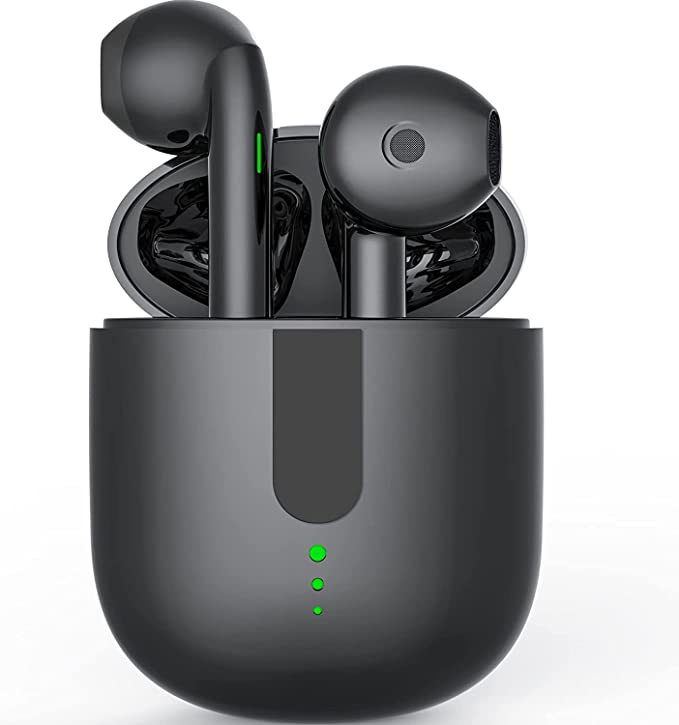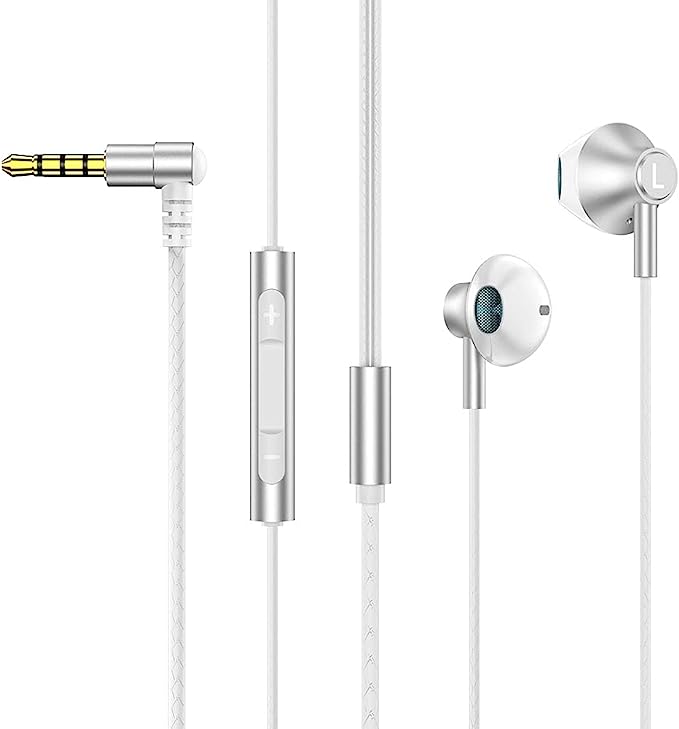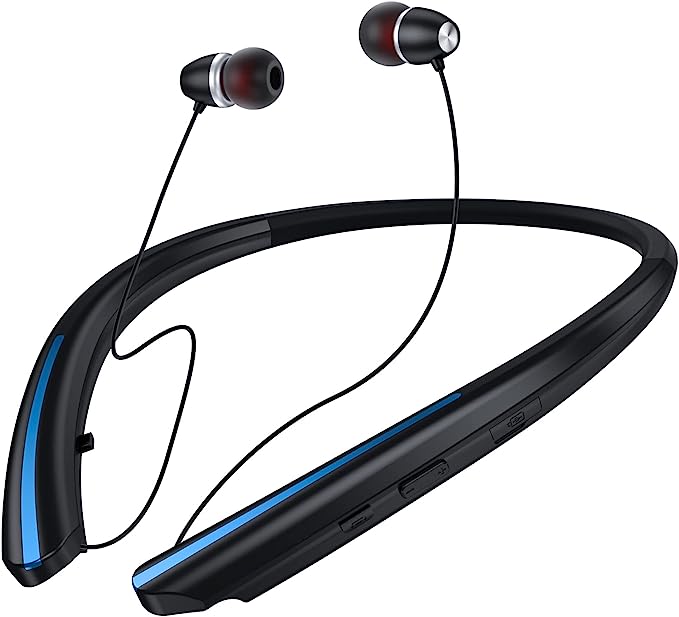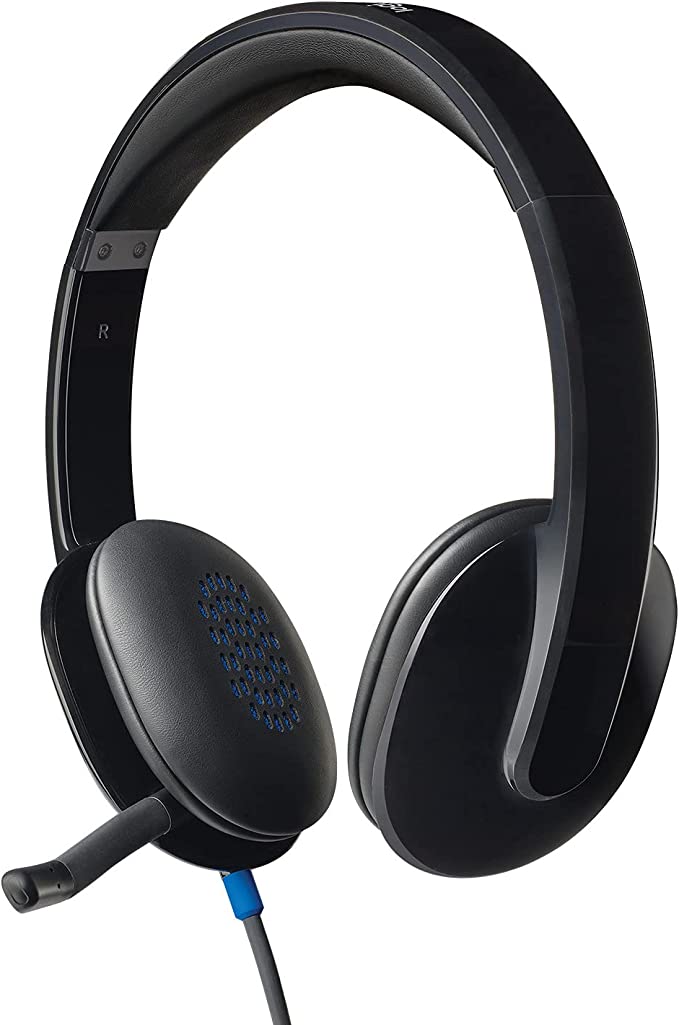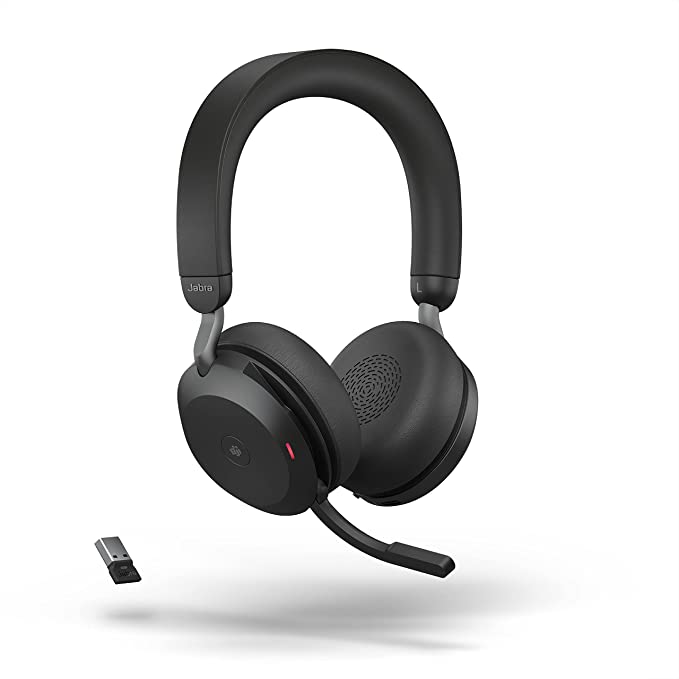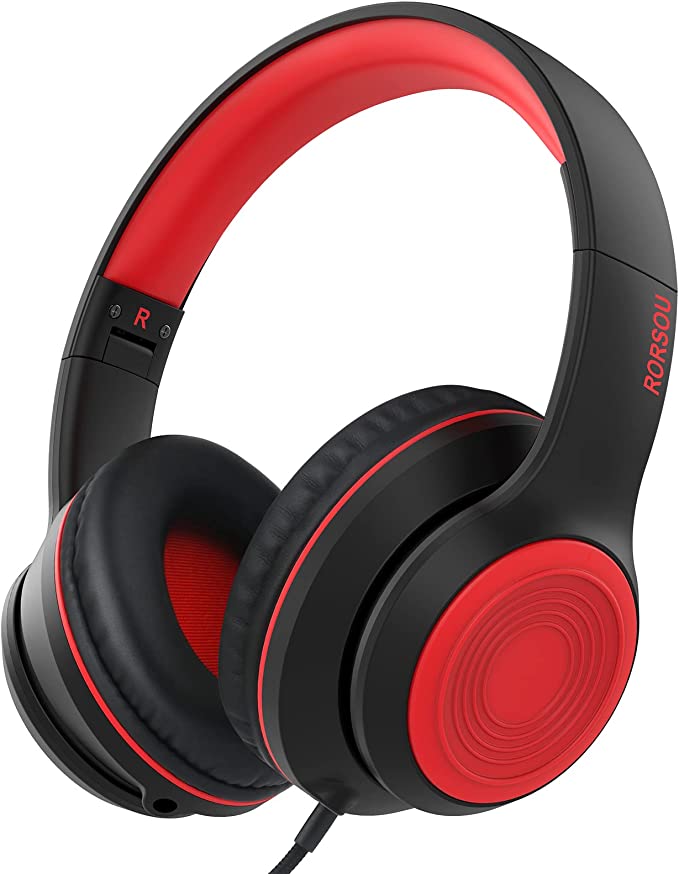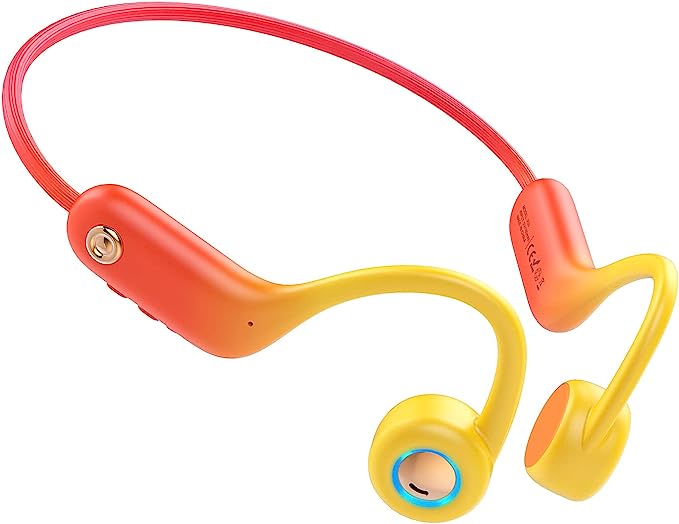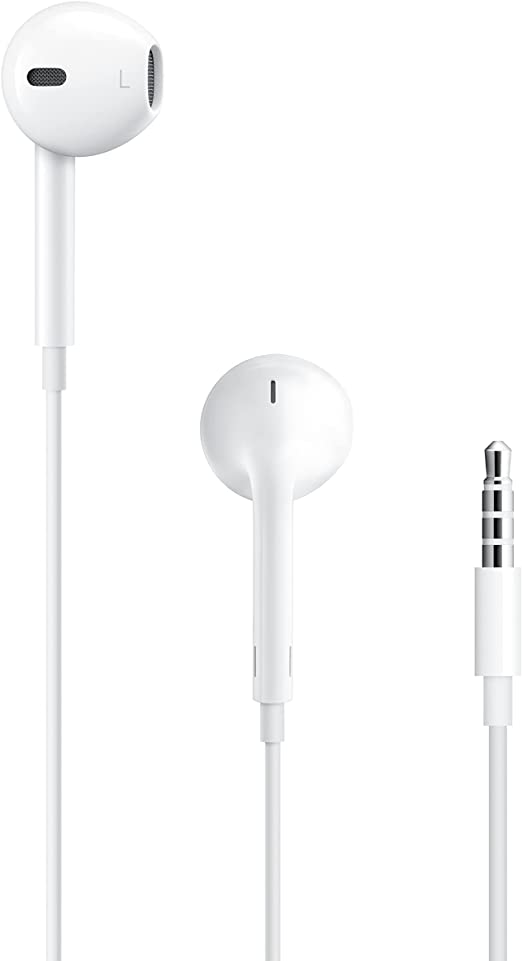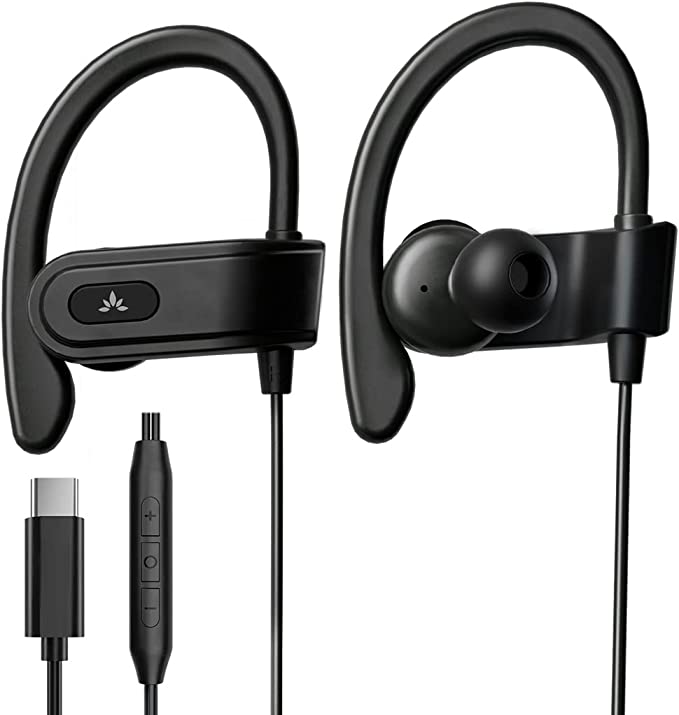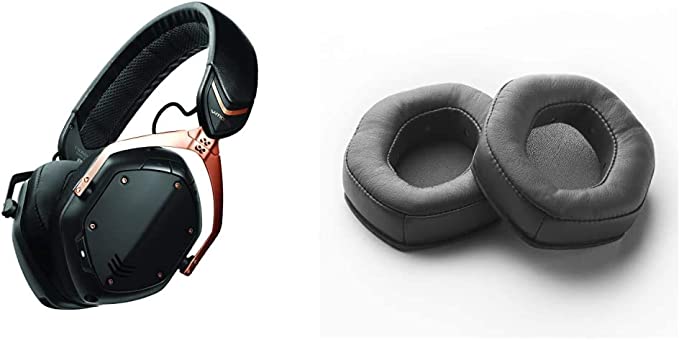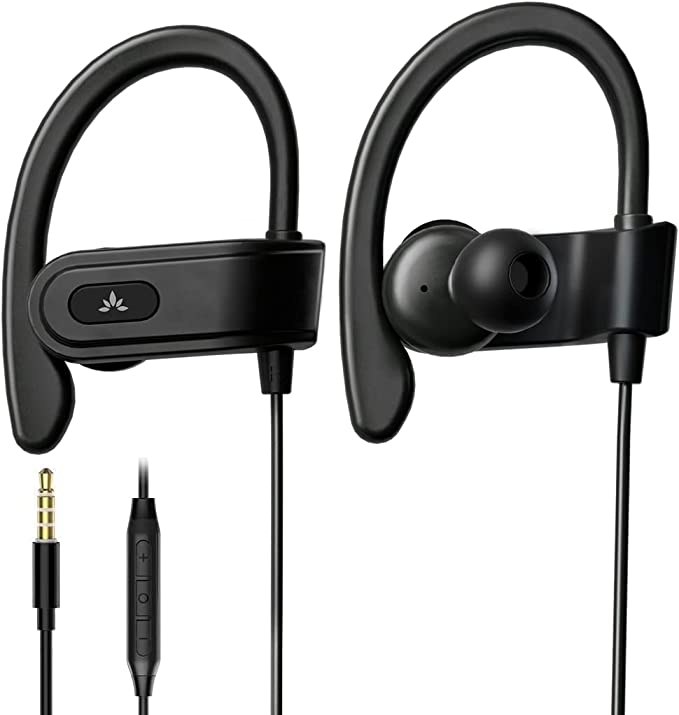TOZO A1 Mini Earbuds: The Surprising Science Squeezed into $20 Audio Tech
Update on June 19, 2025, 2:47 p.m.
Ever paused to marvel at the sheer amount of technology we carry around, often without a second thought? It’s particularly astounding when you consider wireless earbuds – those tiny companions that pipe music, podcasts, and calls directly into our lives. Once a luxury, they’ve become an everyday staple. But what if I told you that a rather impressive slice of this audio engineering, comfort, and convenience can be had for about the price of a couple of fancy coffees? That’s the intriguing puzzle presented by devices like the TOZO A1 Mini Wireless Earbuds, which list at a mere $19.99. It prompts a fascinating question: how on earth do they pack so much into something so small and so affordable? Let’s embark on a friendly exploration, a peek under the hood if you will, at the surprising science and clever engineering that make these miniature marvels possible.

More Than Just Milligrams: The Science of “Barely-There” Comfort
One of the first things you’d notice about the TOZO A1 Mini, even before you hear them, is how astonishingly light they are. Each earbud weighs a mere 3.7 grams. To put that in perspective, a standard U.S. nickel coin weighs 5 grams! This isn’t just a happy accident; it’s a direct result of meticulous material science. Engineers select specific grades of lightweight yet durable polymers – think materials like polycarbonate (PC) or acrylonitrile butadiene styrene (ABS) – for the earbud housings. These plastics offer an excellent strength-to-weight ratio, crucial for minimizing mass. Why does this fractional weight matter so much? It’s simple physics: less mass means less inertia and less pressure on the delicate structures of your ear, significantly reducing the chances of ear fatigue, especially during those long listening sessions or active workouts.
But comfort isn’t just about being feather-light. The A1’s product page mentions that the “surface and Angle of A1 earbuds in-ear part have been polished and refined repeatedly.” This hints at an iterative design process rooted in ergonomics, the science of designing equipment and devices that fit the human body and its cognitive abilities. The goal is to create a shape that nestles securely and comfortably within the concha and ear canal. This is particularly vital for those with smaller ears, who often find generic earbuds to be painful or prone to falling out. It’s a subtle art, informed by anthropometry – the study of human body measurements – to find angles and curves that most ears will welcome.
And then there’s the unsung hero of earbud comfort and sound: the eartips. The TOZO A1 Mini thoughtfully includes five pairs, ranging from XS to XXL. These are typically made of soft, pliable silicone. Finding the right eartip size is paramount for two reasons. Firstly, comfort – an ill-fitting tip can cause pressure points. Secondly, and just as importantly, for the acoustic seal. A snug seal prevents sound leakage (especially those precious bass frequencies) and provides a degree of passive noise isolation, letting you focus on your audio without needing to crank up the volume excessively.

The Little Engine That Could: Crafting Sound in Miniature
Now, let’s talk sound. How does something so tiny produce what TOZO describes as “immersive premium sound” with “treble full of dynamics, and the bass powerful”? The heart of the A1’s sound production is a 6mm diameter dynamic driver. Imagine a traditional loudspeaker, with its cone and magnet system, and then shrink it down to fit inside your ear. That’s essentially what a dynamic driver is. An electrical audio signal flows through a very fine coil of wire (the voice coil) which is attached to a thin, flexible membrane (the diaphragm). This coil sits within a magnetic field created by a small, powerful magnet. As the audio signal undulates, it creates a fluctuating magnetic force, causing the voice coil and the attached diaphragm to vibrate rapidly. These vibrations displace air, creating pressure waves – and voila, that’s the sound we hear!
The challenge for audio engineers is coaxing a full, rich sound from such a diminutive 6mm driver. Smaller diaphragms naturally struggle to move enough air to produce deep, impactful bass, while also needing to be nimble enough for crisp high frequencies. This is where the “tuning” comes in. It’s a delicate balancing act involving the diaphragm’s material properties (its stiffness and damping), the design of the tiny acoustic chamber within the earbud housing itself, and even the way the driver is vented. The goal is to manage resonances and optimize the frequency response to create a sound profile that is pleasing to the ear. While “premium” is a subjective term, especially at this price point, the aim is to deliver a surprisingly competent audio performance. The product description also alludes to an “advanced Bluetooth chip” contributing to the sound quality. This chip isn’t just a conduit for the wireless signal; it also handles the digital-to-analog conversion (DAC) and potentially some level of audio signal processing, ensuring the sound played by the earphones is as “beautiful and pleasant” as intended.

Untangling Wireless Freedom: What Bluetooth 5.3 Really Means for You
The magic that severs the tethers to your phone is, of course, Bluetooth. The TOZO A1 Mini boasts Bluetooth 5.3. For many, this might just seem like a version number, but it does pack tangible benefits that contribute to a better wireless experience, especially when compared to older Bluetooth standards (like 4.x versions). Generally, Bluetooth 5.3 offers enhancements in signal stability and robustness, meaning fewer annoying dropouts or stutters in your music, even in moderately crowded wireless environments. It’s also designed for greater connection range – TOZO claims “long distance connection” of up to 12 meters (around 39 feet) in ideal, unobstructed conditions. This gives you more freedom to roam without your phone glued to your hip.
Furthermore, a key focus of Bluetooth evolution, including 5.3, is power efficiency. This means the Bluetooth radio sips less power from those tiny earbud batteries, helping to achieve that stated 6-hour playback. The product also mentions support for common Bluetooth profiles like HSP (Headset Profile), HFP (Hands-Free Profile), A2DP (Advanced Audio Distribution Profile), and AVRCP (Audio/Video Remote Control Profile). Think of these as different “languages” or protocols that allow your earbuds and phone to communicate effectively for various functions: HSP and HFP are crucial for handling voice calls (enabling “in-call stereo sound” if the network and phone support it), A2DP is the workhorse for streaming high-quality stereo music, and AVRCP lets you control playback (play/pause, skip track) directly from the earbuds. Finally, newer Bluetooth versions generally work towards reducing latency – that perceptible delay between an action on screen (like a character speaking in a video) and the sound reaching your ears. While the A1 page mentions a “low-latency listening experience,” specific figures aren’t given, but Bluetooth 5.3 lays a better foundation for this than its predecessors.

Powering Your Playlist (and Calls): The Science of All-Day Endurance
For a device designed to be an all-day companion, how long it lasts on a charge is critical. The TOZO A1 Mini’s earbuds each contain a 40mAh (milliampere-hour) battery, while the charging case packs a more substantial 400mAh capacity. So, what does “mAh” actually mean? It’s a unit of electric charge, representing the battery’s ability to deliver a certain amount of current (milliamps) over a period of one hour. Essentially, it’s a measure of its energy storage. These tiny power cells are almost certainly lithium-ion or lithium-polymer based, technologies prized for their high energy density – meaning they can store a lot of energy in a very small and lightweight package, perfect for wearables.
The earbuds themselves are rated for up to 6 hours of use on a single charge (at a moderate 60% volume). Once depleted, they slot back into their charging case, which then acts like a portable power bank, using its 400mAh reserve to top them up. TOZO states the case can provide three additional full charges, bringing the total potential playtime to around 24 hours before you need to plug the case itself into a USB-C charger. This system of a primary battery in each earbud and a secondary, larger battery in the case is the standard, clever solution for extending the usability of truly wireless earbuds far beyond what their individual tiny cells could manage alone.
Braving the Elements (and Your Workout): Understanding IPX5 Protection
Life isn’t always lived in a perfectly dry, controlled environment. Whether it’s a sweaty gym session, an unexpected rain shower during your commute, or an accidental splash by the sink, a bit of water resistance is a welcome feature. The TOZO A1 Mini earbuds come with an IPX5 waterproof rating. Let’s decode that. “IP” stands for Ingress Protection, and it’s an international standard (IEC 60529) that classifies the degrees of protection provided by electrical enclosures against the intrusion of solid objects (like dust) and liquids.
The first digit after “IP” relates to protection against solids. In “IPX5,” the “X” means that the device hasn’t been specifically tested or rated for dust protection under this particular certification. The second digit, the “5” in this case, is what tells us about liquid protection. An IPX5 rating signifies that the enclosure is protected against low-pressure water jets projected by a nozzle (6.3mm in diameter) from any direction. In more practical, everyday terms, this means the A1 Minis should comfortably withstand sweat during your most intense workouts, survive being caught in light to moderate rain, and shrug off accidental splashes. It’s a good level of protection for general active use, providing peace of mind, though it doesn’t mean you can go swimming with them (for that, you’d typically look for IPX7 or higher).
A Touch of Magic: The Simplicity of Smart Controls
In our quest for seamless interaction with technology, fiddly buttons are increasingly giving way to more intuitive interfaces. The TOZO A1 Mini features “dual ear touch control,” allowing you to manage various functions with simple taps or holds on the earbuds’ outer surface. This is most likely achieved using capacitive touch sensing. Your body has a natural electrical capacitance. When your fingertip, which is conductive, touches the sensor area on the earbud, it changes the local electrostatic field. Tiny circuits within the earbud detect this change and interpret it as a command.
This technology allows for a sleek, button-free design and provides convenient control over volume, track selection (previous/next song), play/pause, answering or ending calls, and even activating your phone’s voice assistant (like Siri or Google Assistant). It’s about making those common interactions quicker and less obtrusive, so you can keep your phone in your pocket or bag and stay immersed in your audio or conversation.

Conclusion: The Democratization of Delightful Audio
When you step back and consider all these pieces of technology – the careful ergonomic shaping and material science for comfort, the miniature acoustic engineering striving for balanced sound, the advanced wireless protocols of Bluetooth 5.3 ensuring stable connections, the efficient power management for all-day listening, and the practical water resistance for everyday resilience – it’s genuinely impressive to find them converging in a product like the TOZO A1 Mini, especially at its highly accessible $19.99 price point.
These earbuds serve as a wonderful emblem of a broader trend: the democratization of technology. Features and performance levels that were once the preserve of high-end, expensive gadgets are steadily trickling down to become available to almost everyone. It’s a testament to continuous innovation in design, manufacturing, and component technology. So, the next time you pop in your wireless earbuds, regardless of their price tag, take a moment. There’s a surprising amount of science and ingenuity nestled right there, quietly working to make your day a little bit better, a little more melodious, and a little more connected. Armed with this understanding, perhaps we can all appreciate not just the convenience, but the cleverness packed into the unassuming gadgets that are such an integral part of our modern lives.
